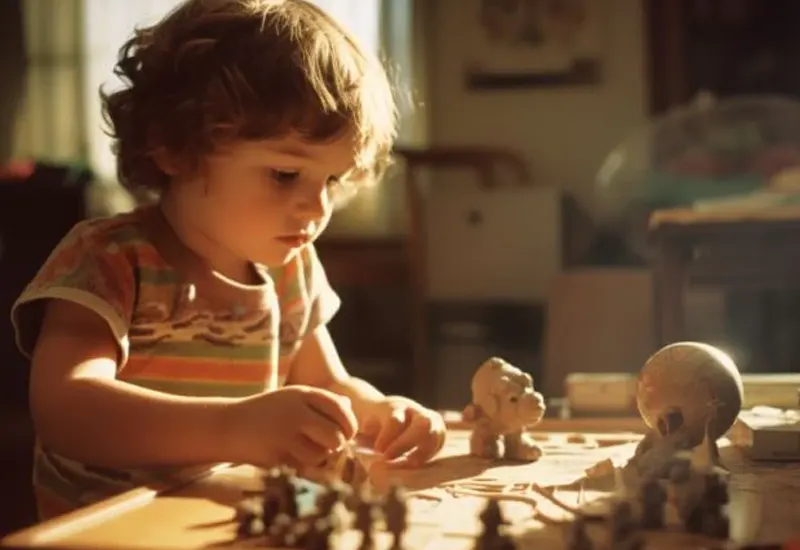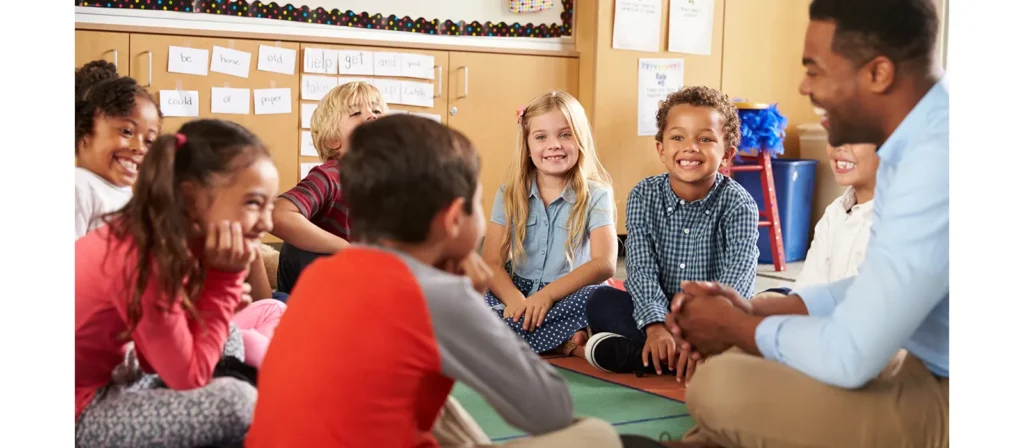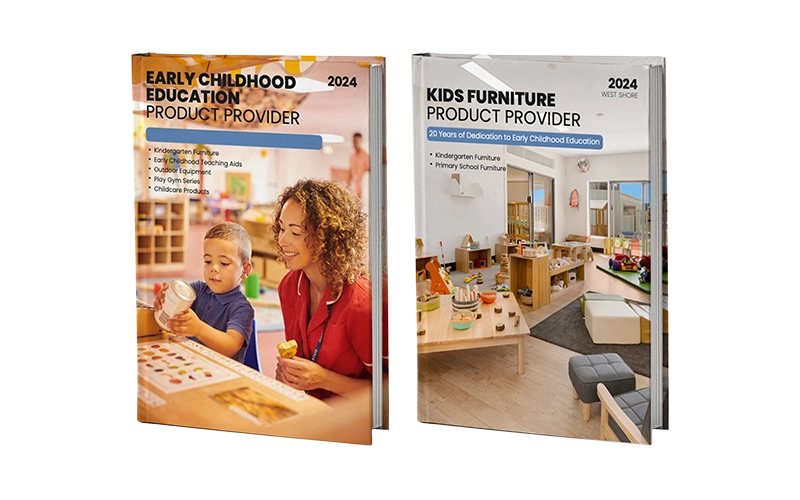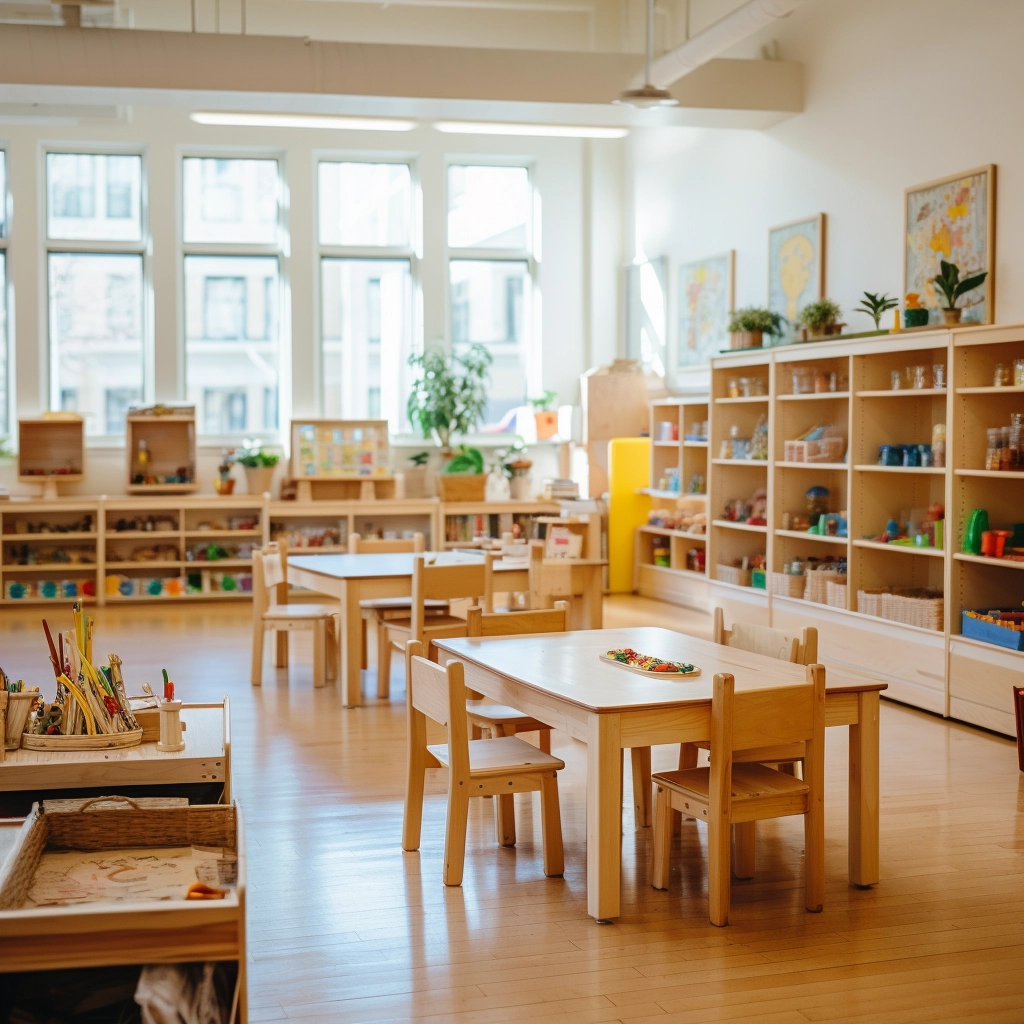Are you struggling to create engaging and effective preschool lesson plans? Do you find it challenging to balance educational objectives with the dynamic needs of young children in your classroom? Crafting the right lesson plan that sparks curiosity and fosters development can feel daunting, especially when addressing various learning styles, social needs, and cognitive goals. With so many activities to choose from and different subjects to integrate, it’s easy to feel overwhelmed.
You’re not alone if you’re unsure where to begin or how to structure a preschool lesson plan that captivates your students. Many seasoned or new teachers face difficulties designing lessons that balance structure and creativity. Without clear guidance, it’s easy to fall into a routine of repetitive activities that fail to engage young learners and leave developmental goals unmet. This can lead to frustration for teachers and students alike and ultimately impact the effectiveness of the preschool education lesson plans.
This comprehensive guide is here to help you craft dynamic and engaging preschool lesson plans that meet educational standards and foster creativity, social skills, and emotional growth. By following proven strategies, you’ll learn how to integrate play-based learning, tailor activities to diverse developmental stages, and create a balanced childcare curriculum plan that resonates with you and your students. Let’s dive in and transform your approach to lesson planning, ensuring every child thrives in an environment of exploration and fun!

What Are Preschool Lesson Plans?
High-quality preschool lesson plans are the backbone of a thriving preschool environment. Well-structured lesson plans set a roadmap for the day, ensuring that young children are engaged, learning, and growing in a nurturing environment. A preschool lesson plan aims to keep the day organized and ensure learning occurs across different developmental areas. A good lesson plan will integrate various learning styles, catering to each child’s needs while maintaining a cohesive structure. This structure includes learning objectives, activities, materials, assessment methods, and time allocation.
Preschool lesson plans are a tool for teachers to ensure they address the needs of every child in their classroom while also meeting broader educational goals. These plans are flexible, so teachers can adapt activities depending on the children’s responses, making learning engaging and effective.
Preschool Learning Goals
In preschool, one of the primary goals is to introduce basic academic skills that lay the foundation for future academic success. These concepts are essential for early learning, and preschool lesson plans should be designed to help children grasp these skills engagingly and interactively. Below are key academic skills and concepts that preschoolers should be introduced to:
Essential Academic Skills and Concepts
Academic skills provide the foundation for future learning in preschool. These basic academic skills introduce children to essential concepts that will become crucial in their educational journey. Preschool lesson plans aim to familiarize young learners with foundational concepts such as numbers, letters, colors, shapes, and basic patterns.

- Early Literacy Skills: Preschoolers begin to develop early literacy skills by recognizing letters, learning their sounds, and understanding that print has meaning. Activities like letter tracing, singing the alphabet song, and reading simple stories help children build a love for reading and writing.
- Numeracy Skills: Numeracy skills focus on counting, recognizing numbers, and understanding basic math concepts like “more” and “less.” Activities like counting objects, sorting by size or color, and simple addition or subtraction introduce children to early math skills.
- Shapes and Colors: Children learn to recognize and name basic shapes (circle, square, triangle) and primary colors (red, blue, yellow). Sorting objects by shape and color helps reinforce these concepts in a fun, interactive way.
- Patterns and Sequences: Preschoolers start recognizing simple patterns (e.g., AB, ABC) and sequences (first, second, third). Activities like completing patterns with blocks or drawing help develop logical thinking and reasoning skills.
- Time Concepts: Preschoolers begin to understand basic time concepts like “today,” “tomorrow,” and parts of the day (morning, afternoon, evening). Calendar activities and routines, like discussing the day’s events, help children grasp the passing of time.
Motor Skills
Developing motor skills is crucial for preschool’s fine and gross motor development. Fine motor skills focus on using small muscles, such as those needed for holding a pencil, cutting with scissors, or manipulating small objects. Gross motor skills, on the other hand, involve larger muscle groups and are developed through activities like running, jumping, and climbing. Activities like drawing, building with blocks, dancing, and playing outdoors support the development of motor skills, helping children improve coordination, strength, and body awareness.
Social-Emotional Skills
Social-emotional skills help preschoolers interact with others and manage their own emotions. Children learn to share, take turns, and cooperate through group activities and play. They also begin to understand and express their feelings appropriately. Preschool lesson plans should include activities that teach empathy, self-regulation, and conflict resolution. Role-playing, group discussions, and cooperative games provide opportunities for children to practice these skills, ensuring they develop positive relationships with their peers and a sense of emotional well-being.
Cognitive Skills

Cognitive skills focus on how children think, learn, and understand the world around them. Preschoolers develop these skills through problem-solving activities, memory games, and early math or science experiments. These activities encourage logical thinking and help children grasp concepts like cause and effect, classification, and categorization. Additionally, promoting language development through storytelling and asking questions helps enhance cognitive abilities as children expand their vocabulary and learn to think critically about their surroundings.
Why Are Preschool Lesson Plans Important?
Preschool lesson plans are the cornerstone of effective preschool education. A well-thought-out lesson plan ensures that your students get the most out of their learning experience while providing structure to your day. Preschool is a crucial stage for young children, and the lessons provided must cater to their developmental needs, helping them grow academically, socially, and emotionally.
A good preschool lesson plan doesn’t just dictate what children learn—it also focuses on how they learn. It encourages creativity, exploration, and hands-on learning, essential for young children. Integrating play, song, art, and sensory activities into your lesson plans addresses multiple learning styles and helps children develop various skills.

Types of Preschool Lesson Plans
Various approaches to lesson planning exist, each with advantages and limitations. No single approach is inherently superior; the key is selecting the one that best meets your program’s needs.
The Thematic Calendar Approach and the Emergent Curriculum Approach are the most commonly considered methods. Below, we explore each approach in detail.
Thematic Lesson Plans
The Thematic Calendar Approach organizes preschool lesson plans around specific themes for a period, such as a month, week, or day. Themes can be based on animals, seasons, holidays, or community helpers. Teachers plan activities and lessons based on a predetermined calendar and focus on one theme at a time, making this approach highly structured.
For example:
- Fall could feature a “Harvest” theme, with activities on pumpkins, apples, and autumn leaves.
- Winter could focus on “Snow” or “Winter Animals,” incorporating related books, songs, and crafts.
This method provides consistency and ensures that each theme is explored thoroughly.
Emergent Curriculum Approach
The Emergent Curriculum Approach is more flexible and child-centered. Rather than planning lessons around pre-determined themes, teachers observe children’s play, discussions, and interests. Based on these observations, teachers adapt their lesson plans to match the children’s curiosity and learning needs, making this approach highly responsive and dynamic.
For example:
- If children are interested in dinosaurs, the teacher might introduce dinosaur-themed activities, including books, art, and math exercises related to dinosaurs.
- If kids ask about the weather, the teacher might incorporate activities exploring weather patterns or rainbows.
This method allows for a more spontaneous, child-driven curriculum that evolves naturally.
Similarities and Differences
Both approaches aim to promote a rich learning environment and engage children across various developmental areas, but they differ in planning, flexibility, and focus.
| Aspect | Thematic Calendar Approach | Emergent Curriculum Approach |
| Planning | Pre-planned, structured around specific themes. | Flexible, based on children’s spontaneous interests and needs. |
| Structure | Fluid evolves as children’s interests emerge. | Fluid, evolves as children’s interests emerge. |
| Focus | Focuses on covering broad topics within a set timeframe. | Fluid evolves as children’s interests emerge. |
| Predictability | Fixed and organized around a set calendar or timeline. | Spontaneous and responsive, adapting as children’s interests evolve. |
| Curriculum Source | Teacher-driven, with predetermined themes and activities. | Child-driven, based on observations of children’s play and interactions. |
| Subject Integration | Predictable and organized, with each theme planned. | Integrates subjects based on the children’s inquiries and play. |
How to Start Building Your Preschool Lesson Plan
Creating a preschool lesson plan requires careful consideration of your goals, students, and resources. A well-designed plan promotes meaningful learning experiences, engages children, and fosters development across multiple domains. Here’s a step-by-step guide to help you build your preschool lesson plans effectively:
Define Your Goals to Create Lesson Plans for Preschoolers

The first step in crafting any preschool lesson plan is to define clear and measurable learning goals. These goals should align with your students’ developmental needs and focus on cognitive, emotional, social, and physical growth.
For younger children, the emphasis will be on foundational skills such as:
- Early literacy: Recognizing letters, sounds, and simple words.
- Numeracy: Learning to count, recognize numbers, and understand basic math concepts.
- Social-emotional skills: Developing empathy, self-regulation, and communication with peers.
Ensure your goals are achievable and flexible, allowing for adaptations based on the children’s needs. The goals should also be age-appropriate to keep them engaged and meet their developmental milestones.
Know Your Students
Understanding the specific age group you teach is crucial when designing lesson plans, as different age groups have different developmental needs and attention spans. Let’s break down the age ranges for preschool lesson plans and what you should focus on for each:
Lesson Plans for Nursery School (Ages 2-4)
Children in this age range are developing essential motor skills and starting to understand social interactions. Focus on:
- Sensory activities to promote fine and gross motor skills (e.g., finger painting, building with blocks).
- Routine-building to help children understand structure and transitions.
- Language development through songs, rhymes, and simple stories.
Lesson Plans for Preschool/Pre-K (Ages 3-5)
At this stage, children are refining their motor skills and starting to engage in more complex social interactions. Lesson plans should focus on:
- Early literacy: Introducing letter recognition and phonics.
- Math skills: Simple counting, shape recognition, and pattern identification.
- Creative play: Dramatic play, storytelling, and arts and crafts to stimulate imagination and problem-solving.
Lesson Plans for Kindergarten (Ages 4-6)
Kindergarten children are preparing for formal schooling, and your lesson plans should start to introduce more structured activities. Focus on:
- Cognitive development: Early math and reading readiness, including essential addition, subtraction, and word formation.
- Social skills: Cooperation, taking turns, and resolving conflicts.
- Independence: Encouraging self-help skills and personal responsibility.
Understanding the developmental milestones for each age group can help you create lesson plans that support the children’s growth and engage them appropriately.

Select Appropriate Materials
Choosing the right materials is crucial for implementing a successful preschool lesson plan. Select items that are both educational and engaging. Some ideas for materials include:
- Toys and manipulatives: Blocks, sorting trays, and puzzle pieces help with fine motor development and problem-solving.
- Books: Picture books, simple stories, and rhyming books encourage literacy development.
- Art supplies: Crayons, markers, playdough, and scissors promote creativity and motor skills.
- Music instruments: Simple instruments like tambourines or xylophones help with rhythm and auditory learning.
Always ensure that the materials you choose are age-appropriate, safe, and conducive to the lesson’s learning objectives.
Write Down Your Lesson Procedures
Once you have your goals and materials ready, it’s time to organize your lesson plan into a sequence of steps. A well-structured plan should include:
Introduction
- Engage the children: Begin with an activity that grabs their attention. This could be a song, a story, or a simple question related to the day’s theme.
- Set expectations: Briefly explain the lesson’s focus and what the children will be learning or doing.
Main Activity
- Interactive, hands-on activities: Ensure that the main activity allows the children to explore the topic in an engaging and fun way. For example, if the lesson is about animals, the main activity might involve creating animal masks, reading an animal-themed book, and discussing the animals’ characteristics.
- Incorporate movement: To keep the children engaged, allow them to move around the room or participate in group activities.

Assessment and Reflection
Lastly, assessment and reflection are vital components of effective preschool lesson plans. While formal assessments are not typical at this stage, observation and reflection will help you gauge children’s progress. Consider these strategies:
- Observe children’s engagement: Are they actively participating in activities? Are they achieving the learning objectives?
- Record observations: Take note of what children can do and areas where they might need more support.
- Self-reflection: After the lesson, reflect on what worked well and could be improved. Did the activities engage the children? Were the materials appropriate? Use this feedback to adjust future lesson plans.
By continually assessing and reflecting, you can adjust your teaching methods to meet your students’ needs better.
How Can You Support Your Child Through Their Preschool Lesson Plan?
Supporting your child through their preschool lesson plan enhances their learning experience and fosters a positive attitude toward education. As a parent or caregiver, you play a vital role in reinforcing the skills and concepts introduced in the classroom. Whether your child is in nursery school (ages 2-4), preschool/pre-k (ages 3-5), or kindergarten (ages 4-6), your involvement can make a significant difference in their academic and personal development. Here are some ways you can actively support your child through their preschool lesson plan:

Be Involved in Your Child’s Learning Journey
Engaging in your child’s learning is one of the most effective ways to support their growth. You can participate in activities by discussing what they learned at school each day. Ask open-ended questions about the lesson, such as, “What was your favorite activity today?” or “What did you learn about animals?” These questions encourage your child to reflect on the lesson and solidify their understanding. This conversation reinforces the preschool lesson plan’s key concepts and helps develop their communication skills.
Create a Consistent Routine
Preschool-aged children thrive on structure and routine. A consistent routine helps children understand what to expect, which increases their confidence and willingness to participate in the activities outlined in the preschool lesson plan. Establishing predictable routines for tasks such as mealtime, bedtime, and playtime will help your child feel more secure and ready to engage in the structured learning experiences at school.
Communicate with Your Child’s Teacher
Regular communication with your child’s teacher is key to understanding the objectives of the preschool lesson plan and how you can reinforce them at home. Teachers can offer insights into your child’s progress, areas of strength, and any challenges they may face. By staying in touch, you can better support your child’s learning journey and ensure consistency between home and school activities.
Encourage Independence and Responsibility
As children grow, one of the goals of their preschool lesson plan is to develop independence and responsibility. Encourage your child to complete simple tasks independently, such as putting away their toys, dressing themselves, or helping set the table. These activities promote confidence and help children feel empowered to take ownership of their learning experiences. Reinforcing these skills at home aligns with the broader goals of social-emotional development outlined in the preschool lesson plan.
Final thoughts
Creating effective preschool lesson plans is key to fostering a positive learning environment and supporting the growth and development of young children. Whether you are designing lessons that focus on basic academic skills, motor development, social-emotional growth, or cognitive abilities, the most critical factor is ensuring that your plans are engaging, flexible, and tailored to the needs of the children in your care. Following a structured process, selecting the right materials, and being adaptable to your student’s interests can create an enriching and dynamic learning experience that helps children thrive.
It’s also essential to remember that effective lesson planning isn’t just about classroom activities—it’s about building an environment where children feel inspired to explore, question, and grow. With the proper support at home and a thoughtful approach in the classroom, your preschool lesson plans can become the foundation for lifelong learning.
At West Shore Furniture, we understand how important it is to create a nurturing environment for young learners. As a leading manufacturer and supplier of preschool furniture, we have over 20 years of experience in the industry, providing a wide range of high-quality, durable furniture tailored to the needs of early childhood education centers. From classroom design and custom furniture solutions to production, quality control, and delivery, we offer a one-stop service to ensure your space is functional, safe, and inspiring. Our diverse selection of preschool furniture comes in various styles, materials, and sizes, ensuring that every learning environment can be optimized for comfort and creativity.
FAQ: Preschool Lesson Plans
1. How can I design a daily lesson plan suitable for 3-5-year-old preschoolers?
Design a preschool lesson plan with clear goals focusing on early literacy, math skills, and motor development. Include structured learning activities and playtime to encourage creativity and social skills.
2. How can STEAM (Science, Technology, Engineering, Arts, and Math) elements be incorporated into preschool lesson plans?
Incorporate STEAM by using hands-on activities like simple experiments for science, building toys for engineering, basic math games, and art projects to promote creativity and problem-solving.
3. How do I balance playtime and learning time in a preschool curriculum?
Balance learning time and play-based learning by offering structured academic sessions followed by unstructured play that encourages creativity, social interaction, and motor development.
4. What are some effective themed activities to enhance preschoolers’ social skills?
Use role-playing games, group projects, and cooperative activities, such as “Community Helpers” themes, to teach sharing, taking turns, and emotional expression.
5. How can I design interactive lessons through storytime in preschool?
Make storytime interactive by using props, asking questions, and encouraging children to participate in storytelling to develop listening, comprehension, and language skills.
6. How do I assess preschoolers’ learning progress and adjust lesson plans accordingly?
Assess progress through observation and note how children engage with activities. Use this feedback to adjust lesson plans and provide extra support or more challenging tasks as needed.





